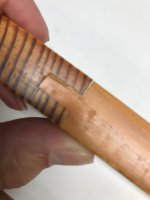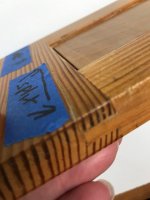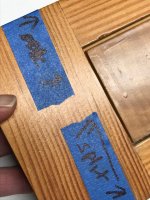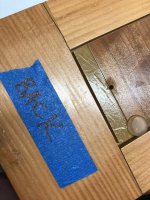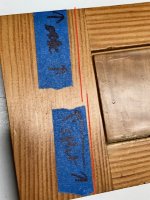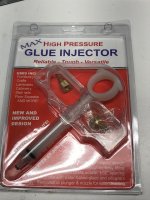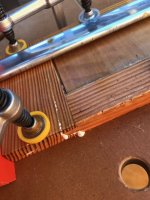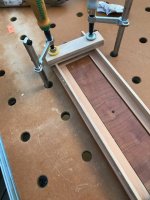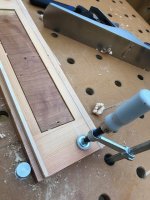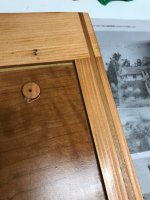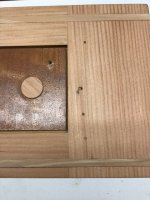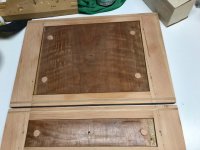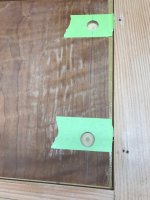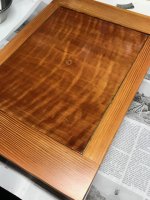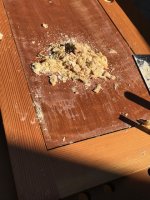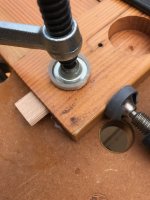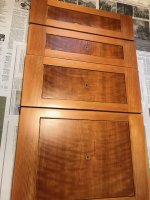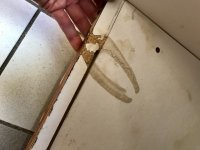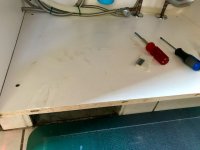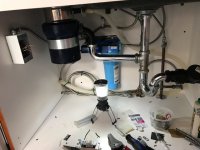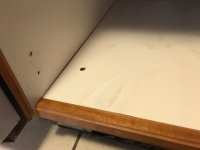It's a rainy day and am diving into a kitchen refinish project I've been ignoring/avoiding. The bank of drawers nearest our sink and stove are more heavily used than all other cabinets in our kitchen and have developed splits at the T&G joints. They're also in need of refinishing.
I think origin of the splits was installation of too thick bumper pads on drawer sides that caused stress to the glue joint each time the drawer got slammed shut. After repair to the fronts I can reduce stress on the joint with some combination of new or repositioned slides and/or more careful use of bumpers.
Considering everything below but maybe folks here have better suggestions?
1- Pulling apart and reattaching with Dominos (Fir is split on multiple grain lines, likely won't come apart clean)
2- Reglue joint with high pressure syringe (maybe not super strong but cleanest)
3- Add dowels from side to #2 (plenty strong but long way to drill in a thin panel, panel is too tall for my drill press)
4- Cut a dado across top and bottom of backs and install a semi decorative spline for strength (will be somewhat visible but plenty strong)
Did my best to get photos of the damage, basically the sides are split on several grain lines. Any suggestions appreciated, favoring #4 above right now.
I think origin of the splits was installation of too thick bumper pads on drawer sides that caused stress to the glue joint each time the drawer got slammed shut. After repair to the fronts I can reduce stress on the joint with some combination of new or repositioned slides and/or more careful use of bumpers.
Considering everything below but maybe folks here have better suggestions?
1- Pulling apart and reattaching with Dominos (Fir is split on multiple grain lines, likely won't come apart clean)
2- Reglue joint with high pressure syringe (maybe not super strong but cleanest)
3- Add dowels from side to #2 (plenty strong but long way to drill in a thin panel, panel is too tall for my drill press)
4- Cut a dado across top and bottom of backs and install a semi decorative spline for strength (will be somewhat visible but plenty strong)
Did my best to get photos of the damage, basically the sides are split on several grain lines. Any suggestions appreciated, favoring #4 above right now.

